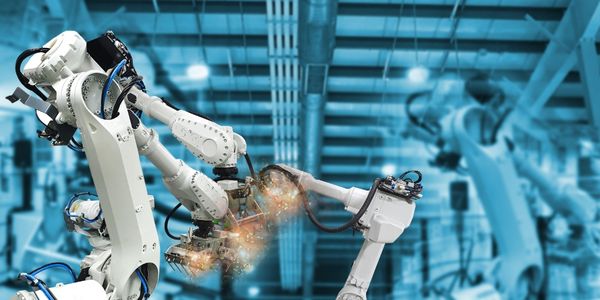Engineering Simulation for Durable Spacecraft Components Design: A Case Study of Astrobotic Technology, Inc.

Technology Category
- Analytics & Modeling - Digital Twin / Simulation
- Sensors - Temperature Sensors
Applicable Industries
- Equipment & Machinery
- Life Sciences
Applicable Functions
- Product Research & Development
- Quality Assurance
Use Cases
- Digital Twin
- Virtual Reality
Services
- Testing & Certification
About The Customer
Astrobotic Technology, Inc. is a pioneering company in the lunar frontier, providing commercial payload delivery and robotic services through missions of increasing scope and capability. Their initial mission, Tranquility Trek™, aims to launch a robot to the Moon on a SpaceX Falcon 9 launch vehicle, win the Google Lunar X PRIZE, and return high-definition 3-D video and imagery. The company is committed to designing and refining lightweight aluminum and composite spacecraft to withstand the static acceleration and dynamic random vibration loads of launch while maintaining an acceptable level of safety.
The Challenge
Astrobotic Technology, Inc. faced a significant challenge in designing the structural components of the Tranquility Trek spacecraft. The components comprised of aluminum and lightweight composites, where carbon fiber was bonded to aluminum honeycomb to form a high-strength yet lightweight sandwich material. The layered construction and anisotropic properties of the sandwich required specialized pre-processing tools to accurately represent the fiber direction of every layer of carbon. Additionally, specialized post-processing tools were needed to predict sandwich failure. The company also had to consider random loads during launch. Astrobotic needed to test multiple spacecraft configurations under launch conditions to select and refine the best design in a cost-effective manner.
The Solution
Astrobotic Technology, Inc. utilized ANSYS® Mechanical™, ANSYS DesignModeler™, and ANSYS Workbench™ to address their design challenges. Engineers imported CAD geometry into the ANSYS environment using a direct interface. The ANSYS DesignModeler tool pre-processed the model to prepare it for simulation. ANSYS Meshing provided automated discretization of the geometry while allowing user-defined refinement in regions of interest. To define the layered elements for laminate and sandwich layups, engineers used ANSYS Parametric Design Language (APDL) for ANSYS Mechanical software within the ANSYS Workbench environment. The team employed ANSYS Mechanical software within Workbench to define multiple analysis types (free vibration, static acceleration and random vibration) that all share the same geometry, material properties and connections. Using ANSYS Mechanical APDL capabilities within ANSYS Workbench, engineers compared the results against failure criteria to consider the layered construction of the materials and to identify regions of potential failure.
Operational Impact
Quantitative Benefit

Case Study missing?
Start adding your own!
Register with your work email and create a new case study profile for your business.
Related Case Studies.

Case Study
Smart Water Filtration Systems
Before working with Ayla Networks, Ozner was already using cloud connectivity to identify and solve water-filtration system malfunctions as well as to monitor filter cartridges for replacements.But, in June 2015, Ozner executives talked with Ayla about how the company might further improve its water systems with IoT technology. They liked what they heard from Ayla, but the executives needed to be sure that Ayla’s Agile IoT Platform provided the security and reliability Ozner required.

Case Study
IoT enabled Fleet Management with MindSphere
In view of growing competition, Gämmerler had a strong need to remain competitive via process optimization, reliability and gentle handling of printed products, even at highest press speeds. In addition, a digitalization initiative also included developing a key differentiation via data-driven services offers.

Case Study
Predictive Maintenance for Industrial Chillers
For global leaders in the industrial chiller manufacturing, reliability of the entire production process is of the utmost importance. Chillers are refrigeration systems that produce ice water to provide cooling for a process or industrial application. One of those leaders sought a way to respond to asset performance issues, even before they occur. The intelligence to guarantee maximum reliability of cooling devices is embedded (pre-alarming). A pre-alarming phase means that the cooling device still works, but symptoms may appear, telling manufacturers that a failure is likely to occur in the near future. Chillers who are not internet connected at that moment, provide little insight in this pre-alarming phase.

Case Study
Premium Appliance Producer Innovates with Internet of Everything
Sub-Zero faced the largest product launch in the company’s history:It wanted to launch 60 new products as scheduled while simultaneously opening a new “greenfield” production facility, yet still adhering to stringent quality requirements and manage issues from new supply-chain partners. A the same time, it wanted to increase staff productivity time and collaboration while reducing travel and costs.

Case Study
Integration of PLC with IoT for Bosch Rexroth
The application arises from the need to monitor and anticipate the problems of one or more machines managed by a PLC. These problems, often resulting from the accumulation over time of small discrepancies, require, when they occur, ex post technical operations maintenance.

Case Study
Robot Saves Money and Time for US Custom Molding Company
Injection Technology (Itech) is a custom molder for a variety of clients that require precision plastic parts for such products as electric meter covers, dental appliance cases and spools. With 95 employees operating 23 molding machines in a 30,000 square foot plant, Itech wanted to reduce man hours and increase efficiency.


